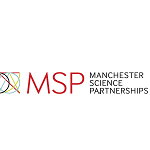From data to drugs - a brief introduction to AI in drug discovery

The road to an approved drug is well known to be an arduous journey. Recent estimates put the cost of bringing a new drug to market at a figure of around USD 2 billion, spent over a period of 12 years. An article by Jack Scannell et al. back in 2012 coined the phrase “Eroom’s Law” to describe the trend of the increasing development cost of pharmaceuticals over time, which is the reverse of the trend seen for the cost of transistors (i.e. Moore’s law).
The use of artificial intelligence (AI) in the drug discovery process is receiving a lot of attention. The main attractions being the promise of faster, more reliable, and ultimately cheaper development of new pharmaceutical treatments. Could the progression of Moore’s law be the undoing of Eroom’s?
Where does AI fit in?
The number of AI start-ups engaged in drug discovery is steadily growing. A survey of the AI start-up landscape puts the present number of companies with available AI products for supporting drug discovery at about 150. These start-ups are not set to go it alone: big pharma companies are also paying attention to the hype around AI with at least 33 publicly participating in the area.
The use of AI in drug discovery is currently focussed in four areas:
- Collecting and organising knowledge
The amount of available biomedical data is increasing exponentially. AI can play a very useful role in collecting and curating this data for the use of scientists through natural language processing – companies doing this include Innoplexus and Iris.ai.
- Identifying target diseases or disease pathways
Many current AI start-ups are utilising AI to crunch through the available data to identify disease targets, which benefits the inception of drug discovery projects. Companies doing this include Data4Cure and Genialis.
- Finding the best compounds to treat a disease
AI can help to evaluate the intractably large number of chemicals which can be used to augment a disease pathway – from small-molecules to biologics. Some companies are hunting algorithms capable of de novo design of compounds while others look to repurpose known drugs or drug candidates. Companies doing this include Healx and Atomwise.
- Ensuring drugs go to the right patients
Accurately tracking disease progression and matching treatments to disease state or patient genetics can have a large impact on the success of drug discovery project. AI is being used effectively for the analysis of medical images and biomarkers. Companies doing this include Cambridge Cancer Genomics and biotix.ai.
Real world success
The field of AI in drug discovery is still very young, however there are already some notable successes. A partnership between BASF and Nuritas uncovered new peptides which can be isolated from natural brown rice and affect cytokine release. Their product is already available on the market as an anti-inflammatory sports nutrition supplement.
With extraordinary speed, Healx, a start-up using AI to drive the repurposing of drugs for neglected diseases, has progressed a project from inception to having a clinical candidate in phase 2a trials within 18 months. The project is searching for new treatments for an autism-causing condition called fragile X syndrome.
Increasing collaboration
In the past year, one of the most well established AI start-ups, BenevolentAI has announced several partnerships, including with AstraZeneca – to target new treatments for chronic kidney disease (CKD) and idiopathic pulmonary fibrosis (IPF), and with Novartis – to investigate indications and responder groups for oncology assets currently in clinical development. Many start-ups and big pharma companies alike are making multiple partnerships across different disease areas, allowing for a healthily competitive environment for multiple co-existing AI service providers.
The outcomes of AI algorithms can centre on the data to which the algorithms have access. In simple terms, the more data available and the more organised the dataset is, the better. These principles are driving collaboration in the pharmaceutical sector.
In an unprecedented move, 17 partners (including 10 pharmaceutical companies) have come together to create MELLODDY, a consortium hoping to establish a platform allowing machine learning from multiple sets of proprietary data. MELLODDY is set to use blockchain to maintain confidentiality of the partner’s data during the project.
It seems that in the near future, increased data sharing and collaboration will help to push this area of the pharmaceutical industry forwards, possibly even into a core position in the pharmaceutical research pipeline.
Implications for intellectual property
Some are heralding the emergence of AI in the pharmaceutical industry as the beginning of a new era of drug discovery, where computers will be able to design drugs from start to finish.
When inventions begin to be produced entirely by AI, with no human involvement (or at least, none that can be regarded as inventive) this raises interesting questions about inventorship (and hence ownership) of the resulting IP. It has been suggested, in such cases, that an AI system could be recognised as an inventor, with the owner of the AI being the owner of any resultant patents. Attempts have already been made to file patent applications in the name of an AI inventor. However it is likely to be a long time before the relevant legal issues are resolved.
Should AI techniques in pharma become exceptionally well established and, for example, automated repurposing of drugs become commonplace, one could imagine that patent claims directed towards second and further medical uses might find themselves falling below the obviousness threshold for patentability more frequently. However, the impact of a system that can design a drug from start to finish, without any (human) inventive input, remains to be realised.
Our blog post from earlier this year explains how patentable claims can be constructed for AI inventions. A section relating to AI inventions was included, for the first time, in the latest edition of the EPO’s Guidelines for Examination and patent offices worldwide are getting ready to deal with increasing numbers of AI inventions.
Thinking about IP is essential for start-ups in this growing area, including in relation to the ownership of IP, for example in collaborative arrangements.
If you would like advice on patent protection, or if you have any questions about the ownership of IP rights, freedom to operate, or any other aspect of intellectual property, please get in touch with the experienced team at Mewburn Ellis.
Written by Joseph Newcombe, Patent Assistant, Mewburn Ellis LLP.
Joseph is a member of our chemistry and materials patent team.
To read more commentary from Joseph on this and other related topics you can sign up to our News and Insights.





















